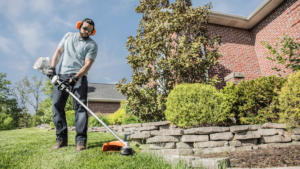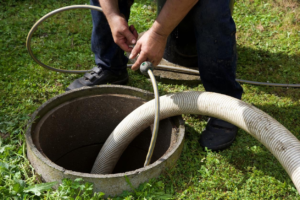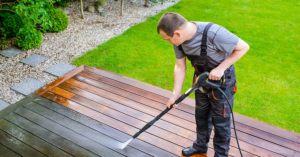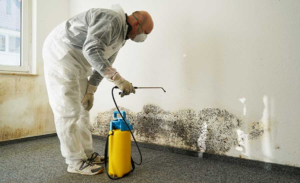North Vancouver Pest Control is the practice of controlling organisms that interfere with human activities or damage property. Organisms that can be considered pests include:
Preventive measures can help you avoid infestations. For example, keeping a house clean and clutter-free can reduce the number of rodents hiding inside.
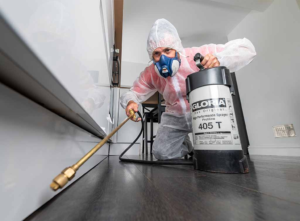
Pests can cause numerous problems to food processing environments, including physical contamination of the product and its packaging from rodent droppings, insect parts, or foreign bodies, contamination with disease-causing organisms carried on the external surfaces or in the guts of the pests (e.g., intestinal worms, fungi, bacteria), and damage to equipment from pest bites or scratches. The presence of pests can also tarnish a company’s image and harm customer loyalty.
The best way to keep pests away is preventative pest control. This involves keeping a building and its outdoor areas as unwelcoming to insects as possible. This can be done by cleaning up the environment, removing rubbish and compost, and keeping an eye out for possible entry points such as cracks or crevices where they might nest. It can also involve regular inspections by pest professionals to find and repair any gaps or holes where insects might enter the premises.
Preventative pest control can be more cost effective than eradicating a full-blown infestation of pests. It is less labour intensive and invasive and can be used in conjunction with other pest control methods such as exclusion, sanitisation, trapping or baiting.
A pest control strategy can be based on the principles of integrated pest management (IPM). IPM involves:
- Monitoring and studying the pests.
- Assessing their tolerance levels.
- Choosing the proper pest control method needed per the tolerance level.
It is a more environmentally friendly approach than simply relying on the use of pesticides.
For museums, implementing prevention measures will reduce the labour required for inspections by making artefacts easier to see and access. This can be achieved through organising storage and exhibition spaces, creating sanitary perimeters on floors by placing materials in a logical manner, ensuring that there are clear lines of sight along walls, and setting up detection systems. It can also involve increasing sanitation, cleaning affected artefacts, relocating or moving them, storing them in suitable containers, fumigating and/or heating them, and conducting frequent inspections.
A pest control program can be tailored to the specific needs of each facility. This will involve the agreed frequency of service visits, types and locations covered by the service, pests to be controlled (including small mammals, crawling insects, birds and weeds), treatment methods used (including trapping, spraying and the use of bait stations, heat or radiation), record keeping, reports and reporting structures.
Suppression
Pests damage crops, plants and structures, contaminate food, cause allergic reactions and asthma attacks, and pose a threat to human health. The goal of pest control is to reduce their numbers to a level that will not cause unacceptable harm. Suppression and prevention are usually joint goals of pest management programs. Suppression can be achieved through a combination of strategies such as trapping, baiting, and the use of pesticides.
The environment has a major impact on pests. Weather conditions, including temperature, moisture levels, and day length, affect pests’ activity and reproduction. The presence of predators, parasites, or other organisms that feed on pests can also affect their population levels. Pests can also be affected by the presence of weeds, disease-causing microorganisms, or soil nutrients.
Pest infestations can be prevented or stopped by removing the conditions that allow them to grow. This can be done by hygienic measures, such as keeping garbage cans closed and removing waste regularly, or physical barriers such as screens, fencing, and netting. Changing irrigation practices can also help control some pests. Chemical controls include ultra-low volume fogging, which uses small amounts of pesticide to kill bugs, and fumigation, which seals a building and fills it with toxic gas to destroy a pest infestation.
Monitoring pests is essential for effective pest control. This can be done by trapping, scouting, or observing pest damage. Monitoring insect, insect-like, and mollusk pests can be done by regular inspections; weed pests are monitored by their visible growth. Monitoring can also involve assessing environmental conditions, such as temperature and moisture levels, to determine whether a pest infestation is likely to occur or to reach a threshold level.
Eradication is rare in outdoor pest situations, and it may be impossible in some cases. For example, attempts to eradicate the Rocky Mountain grasshopper resulted in their sudden extinction due to intense eradication efforts combined with overall anthropogenic landscape changes that made their habitat unsuitable for them. The best method of eradication is to prevent pests from getting into an area by removing their food, water and shelter sources.
Eradication
Eradication is the elimination of an organism from an area to the point where it cannot recolonize. This may be done on a local, regional, national, or global scale. Examples include the eradication of yellow fever, malaria, and poliomyelitis. Eradication is different from control, which is a process that reduces the incidence of disease to a level below that which would occur without intervention (e.g., zero cases of a particular virus in operating rooms of hospitals).
Pest control is based on monitoring, identification, and action thresholds. IPM programs evaluate the proper control method both for effectiveness and risk — less risky methods are used first, such as pheromones to disrupt pest mating or mechanical controls like trapping or weeding. If less risky methods fail to provide adequate control, more intensive controls are used. These can include targeted applications of pesticides or broadcast spraying of non-specific chemicals.
Many pests are controlled naturally by the organisms that they compete with or parasitize. If sufficient numbers of natural enemies can be reintroduced into the pest’s habitat, the population will decrease. If the number of natural enemies is not large enough to control the pest, biological control can be supplemented by releasing large numbers of new enemy species or genetically modifying them, such as by producing and releasing sterile insects.
Biological control can also be enhanced by careful monitoring and timing of pesticide applications to minimize the impact on the natural enemies. For example, spot applications and treating alternating strips of a field can help to minimize contact between the pesticide and beneficial insects. Less persistent pesticides can also help to reduce the negative impacts of a pesticide on its natural enemy population by reducing the amount of time that the predators must spend in the presence of the chemical.
Even the most carefully planned eradication program can encounter problems. Humans can be the source of infection when a disease is eliminated, leading to reintroduction (as happened with yellow fever), or as a result of vaccine strain reversion (as is the case with guinea worm). Political problems and civil strife can also hinder eradication efforts, as was the case for eradicating poliomyelitis.
Control
Even if you or your maintenance crew take great care, buildings can still suffer from pest infestations. A pest is any species in large enough numbers to interfere with the building or its occupants. Pests can cause damage that disrupts operations, costs money to repair, and may pose a health risk for the building’s occupants. They can also interfere with the quality of food production by contaminating crops or making them inedible. Some pests spread disease. For example, cockroaches can spread bacteria that make food unsafe for human consumption. Other pests, such as birds and bats, can carry toxins that can make people sick.
Control methods involve preventing the development of pests or killing them after they have already developed. The most important preventive measures are cleaning and keeping areas uncluttered to prevent hiding spots for pests. Clutter provides places for pests to breed and hide and can block a pest’s access to food sources. Sealing cracks and crevices can help keep them out. Pesticides are also effective, but they should always be used with caution to avoid harming humans and pets.
Some natural forces, such as weather and competition from other organisms, affect all organisms and can help or hinder pest control. Other natural forces that affect pest populations include predators, parasites, barriers, the availability of water and food and shelter. Predicting the effect of these forces on a pest population is difficult, but identifying and taking advantage of them when possible can decrease the need for regular chemical controls.
Integrated Pest Management, or IPM, is an approach to pest control that relies on prevention, inspection, monitoring, and education rather than just spraying chemicals. It involves recognizing the pests’ life cycle, habits, and preferred habitat and then using the most appropriate control measure. This may include the use of a biological or physical method such as traps, removing their nests, or blocking their access to food or water. It may also include a combination of these and other methods. IPM is an environmentally sensitive and economically sound way to manage pests.
